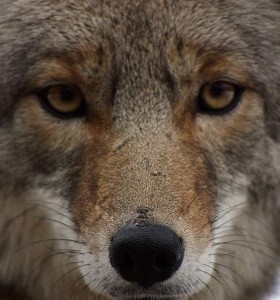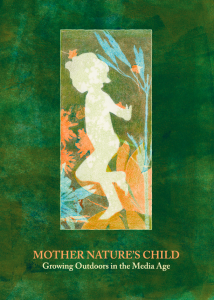 Even before the film started, my antennae were up.
Even before the film started, my antennae were up.
Cath and I had gone to the January 25th screening of Mother Nature’s Child: Growing Outdoors in the Media Age out of general curiosity. The documentary’s message would, I expected, be much like that presented by Richard Louv’s compelling book Last Child in the Woods.
In her brief remarks before the lights went down, however, filmmaker Camilla Rockwell had piqued a more specific interest. She said that certain parts of the film were “edgy.” She would be curious to hear how people felt about them.
What would be “edgy” in a documentary about connecting kids to nature?
My gut gave one answer: hunting.
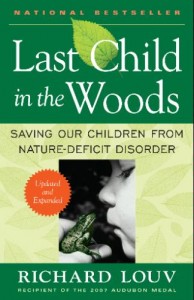 In Louv’s book, I recalled, several pages were devoted to “The Case for Fishing and Hunting.” Louv wrote that these activities “remain among the last ways that the young learn of the mystery and moral complexity of nature in a way that no videotape can convey.” As a non-hunting angler, though, his focus was on fishing. Hunting remained in the background.
In Louv’s book, I recalled, several pages were devoted to “The Case for Fishing and Hunting.” Louv wrote that these activities “remain among the last ways that the young learn of the mystery and moral complexity of nature in a way that no videotape can convey.” As a non-hunting angler, though, his focus was on fishing. Hunting remained in the background.
Settling into my seat, I enjoyed the first half of the film. It’s a well-crafted piece, blending footage of young people outdoors with excerpts from interviews with adults. We saw suburban kids running through the woods and crawling through hollow logs, their voices high with excitement. We saw urban teenagers planting gardens and learning to fly-fish. We heard from teachers, parents, and researchers.
Watching and listening, I was reminded just how crucial interaction with the natural world is for children’s physical, emotional, mental, and spiritual health. I wondered, not for the first time, who I would be today if I had not spent my boyhood summers almost entirely outdoors, wandering the woods, fishing for brook trout, catching tadpoles and bullfrogs.
And then, halfway through the film, there she was: a girl about ten years old, headed to the Vermont woods with her grandfather—in blaze orange.
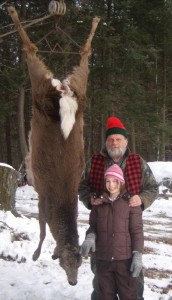
Sitting there in the Montpelier’s independent theater, The Savoy, we watched the girl handling a rifle. We watched her waiting in the woods. We saw clips from interviews: Nancy Bell of The Conservation Fund talking about her respect for animals and why she hunts, Jon Young talking about how close contact with nature helps young people confront deep questions concerning life and death. Finally, we saw a still image of girl and grandfather. Beside them hung a dead deer: her first.
Fifteen years ago, I would have been horrified. Killing animals, I would have argued, has nothing to do with encouraging healthy relationships with nature, especially for kids.
Now, I see it differently. The filmmakers—both of them non-hunters—have given us a fine documentary about children’s relationships with the natural world. They have also given us a stereotype buster: women and girls hunt, and environmentalists, too! Perhaps most importantly, they have given us a great conversation starter.
The film opens a door for hunters and non-hunters to talk about hunting. Why do some of us hunt? What is it about hunting that others find revolting? Is it helpful to distinguish between stereotypes and first-hand experiences? Is it helpful for non-hunters to hear from actual hunters about how they relate to nature and animals? And, of course: What roles can or should hunting play in young people’s lives?
The film also opens a door for hunters and non-hunters to talk about our shared love of nature. It’s high time, after all, that conservationists—hunters, non-hunters, and anti-hunters—stopped lobbing political firebombs at each other.
It’s time we heeded the warning issued by Richard Nelson in his introduction to A Hunter’s Heart: “After we’ve lost a natural place, it’s gone for everyone—hikers, campers, boaters, bicyclists, animal watchers, fishers, hunters, and wildlife—a complete and absolutely democratic tragedy of emptiness.” Unless we work together, how can we insure that there will be natural places left for our children to relate to?
In the post-screening discussion, it so happens, not one person drew attention to the segment on hunting.
No, I take that back. One person did, indirectly. A man stood up to say that his young son, who appeared in the film, has now taken hunter safety and has put both squirrel and rabbit on the family dinner table. The father—a non-hunter (so far)—made it clear: connections with nature, including hunting, have done the boy nothing but good.
Notes: If you know of film festivals, schools, or outdoor education centers that might be interested in showing the film (or buying the DVD), please mention it to them. If you happen to live near any of these upcoming screenings, check it out in person:
- 3/17 – Vermont Institute of Natural Science, Quechee, VT
- 3/24 – CT Outdoor & Environ. Educ. Assn Conference, New Britain, CT
- 3/25 – Environmental Film Festival, Washington, DC
- 3/26 – Green Mountain Film Festival, Montpelier, VT
- 4/5 – Springfield Conservation Nature Center, Springfield, MO
- 5/18 – Shelburne Farms, Shelburne, VT
To learn more about Richard Louv’s work, visit the Children & Nature Network.
© 2011 Tovar Cerulli

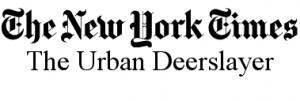


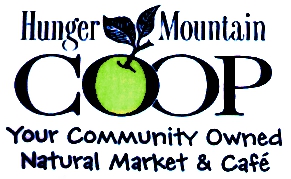 Sudden bouts of wondering why the local food co-op—with its cooler full of local, organic, free-range meats—doesn’t sell hunting licenses.
Sudden bouts of wondering why the local food co-op—with its cooler full of local, organic, free-range meats—doesn’t sell hunting licenses.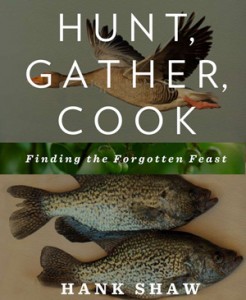
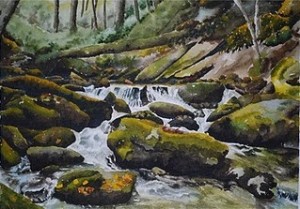
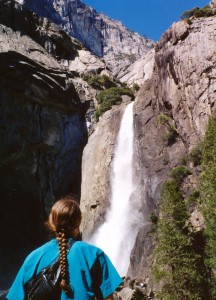 “Words of wisdom for vegans from hunters” – Hmmm. Unlike most of the other Googlers above, you might actually have come to the right place.
“Words of wisdom for vegans from hunters” – Hmmm. Unlike most of the other Googlers above, you might actually have come to the right place.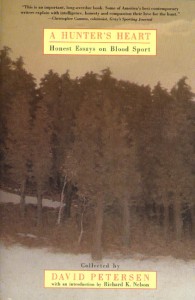
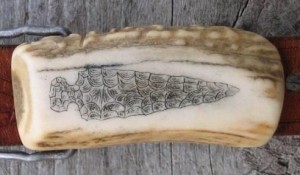 When a cardboard box arrived in the mail, I took out the old knife, secured in a new sheath Uncle Mark had crafted for it. I contemplated the red buck he had painted on its front, and the black deer tracks hidden behind the haft. I reflected on the belt he had made, too, and the ancientness of the image scrimshawed on the antler buckle.
When a cardboard box arrived in the mail, I took out the old knife, secured in a new sheath Uncle Mark had crafted for it. I contemplated the red buck he had painted on its front, and the black deer tracks hidden behind the haft. I reflected on the belt he had made, too, and the ancientness of the image scrimshawed on the antler buckle.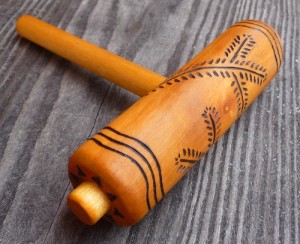 Later, after I bought a secondhand caplock rifle, I took a pruned branch from one of our front yard apple trees—under which deer sometimes forage—and fashioned a ball-starter. With a woodburner, I sketched balsam twigs, the kind of cover through which I might stalk.
Later, after I bought a secondhand caplock rifle, I took a pruned branch from one of our front yard apple trees—under which deer sometimes forage—and fashioned a ball-starter. With a woodburner, I sketched balsam twigs, the kind of cover through which I might stalk.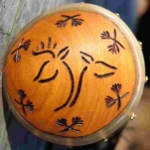 With helpful tips from Mark, I made a powderhorn, too. Two deer stood in silhouette on its cherry plug. Crude lines etched into its side suggested Cold Brook, the rocky little waterway that tumbles through the woods behind our house, along whose banks I might look for tracks.
With helpful tips from Mark, I made a powderhorn, too. Two deer stood in silhouette on its cherry plug. Crude lines etched into its side suggested Cold Brook, the rocky little waterway that tumbles through the woods behind our house, along whose banks I might look for tracks.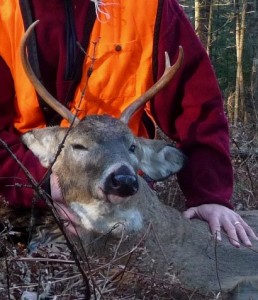 Don’t try too hard, some folks say. Desperation can drive the deer away. The less you expect, the more animals you see.
Don’t try too hard, some folks say. Desperation can drive the deer away. The less you expect, the more animals you see.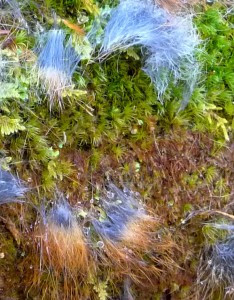 Crouching beside him, I offered thanks and apology—poor compensation for what I had taken—and thought how strange this brief hunt had been. In years past, I had never even seen a buck on opening day.
Crouching beside him, I offered thanks and apology—poor compensation for what I had taken—and thought how strange this brief hunt had been. In years past, I had never even seen a buck on opening day.